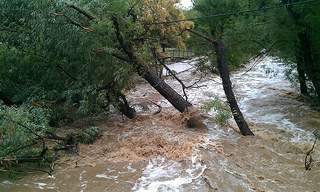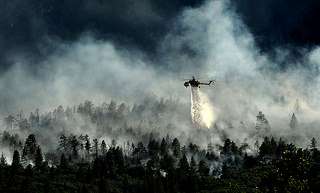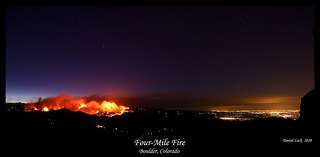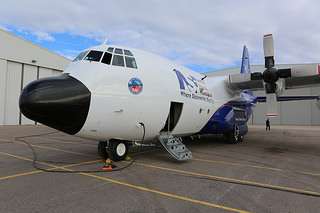Charting Colorado's vulnerability to climate change

Sea-level rise may not be eating away at Colorado's borders, but climate change exposes other critical vulnerabilities in the state, according to a new report. Rising temperatures likely will take a toll on cattle and crops, for example, and could more often leave junior water rights holders with little water and few options.
The new report, "The Colorado Climate Change Vulnerability Study," was commissioned by the Colorado Energy Office in accordance with the Colorado Legislature's House Bill 13-1293. It's a sector-by-sector analysis of the challenges that state residents and leaders will have to deal with in coming decades. It also details many of the ways Coloradans are already grappling with these issues, and where other strategies may help mitigate risk.
"Vulnerability is not just a question of how climate change will affect resources in the state, it's also a question of how well Colorado is prepared to deal with changes," said Eric Gordon, co-lead editor of the report and a researcher with the Western Water Assessment (WWA). WWA is part of the Cooperative Institute for Research in Environmental Sciences (CIRES) at the University of Colorado Boulder, and is funded primarily by the National Oceanic and Atmospheric Administration (NOAA).
"We also know vulnerabilities change over time, as environmental and socio-economic conditions change," said Dennis Ojima, co-lead author of the report and a professor in the Ecosystem Science and Sustainability Department at Colorado State University. "It will be important to keep an eye on this changing landscape of vulnerability."

In the public health sector, Colorado may see more incidents of infectious diseases, the report notes, and the elderly and people living in poverty are especially vulnerable. Climate change impacts on public health are complex and difficult to anticipate, but rising temperatures could mean more frequent episodes of unhealthy air quality and more common heatstroke, West Nile Virus, plague and hantavirus.
For perspective, hotter states such as Florida and Arizona are also dealing with the invasion of diseases typically not seen in the continental United States, such as dengue fever.
"Colorado is lucky to avoid certain diseases that affect hotter areas," Gordon said, "but we are vulnerable to increases in those we already have here, especially West Nile Virus."
Temperatures in Colorado have been rising, especially in summer, and that trend is expected to continue, along with increases in the frequency and intensity of heat waves, droughts and wildfire. Public schools in many Front Range cities are vulnerable to these changes, the report notes. Historically, schools in the state have not needed cooling, so many do not have air-conditioned classrooms. "These rising temperatures have exposed a major vulnerability that could potentially be very expensive to address," the report notes.

"As we assess impacts on various communities, we find that various sectors are affected differently," Ojima said. "For example, droughts would affect streams and fisheries differently than agricultural or energy producers."
Among other findings, by sector:
- Water: The state's reservoirs can provide some buffering against some expected increases in water demand and decreases in flow, but entities with junior rights or little storage are especially vulnerable to future low flows.
- Agriculture: Rising temperatures, heat waves and droughts can reduce crop yield and slow cattle weight gain. Colorado farmers and ranchers are already accustomed to large natural swings in weather and climate, but may find it especially challenging to deal with expected changes in water resources.
- Recreation: Climate projections show that Colorado's springtime mountain snowpack will likely decline by 2050, with potential impacts on late-season skiing. Spring runoff season may also be earlier and shorter, which could affect rafting. But the recreation industry and some Colorado communities are already making changes that could help them adapt to a warmer future. For example, Telluride ski area now markets itself as Telluride Ski & Golf.
- Transportation: As temperatures increase, rail speeds must drop to avoid track damage, leaving the freight and passenger rail industries vulnerable to slowdowns or the need for expensive track replacements.
-

The NSF/NCAR C-130 research aircraft shortly before a test flight. The WINTER 2015 project is investigating wintertime air pollution in the eastern US. Credit: David Oonk/CIRES -

Researchers prepare instruments for the WINTER 2015 project. The project is investigating wintertime air pollution in the eastern US. Credit: David Oonk/CIRES
More information: The full 176-page report is available online: wwa.colorado.edu/climate/co2015vulnerability/
Provided by University of Colorado at Boulder



















